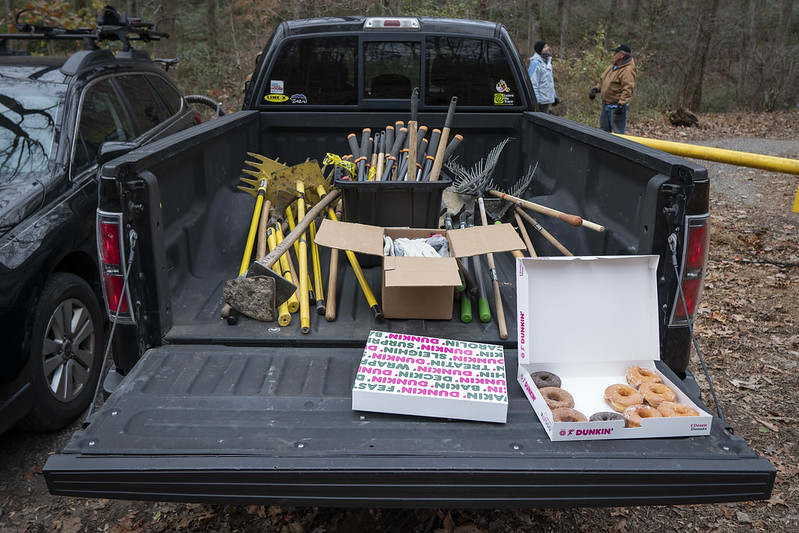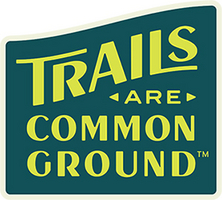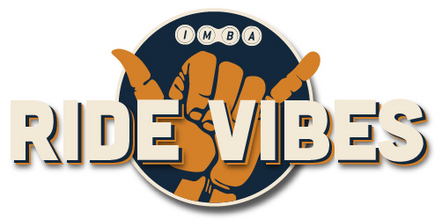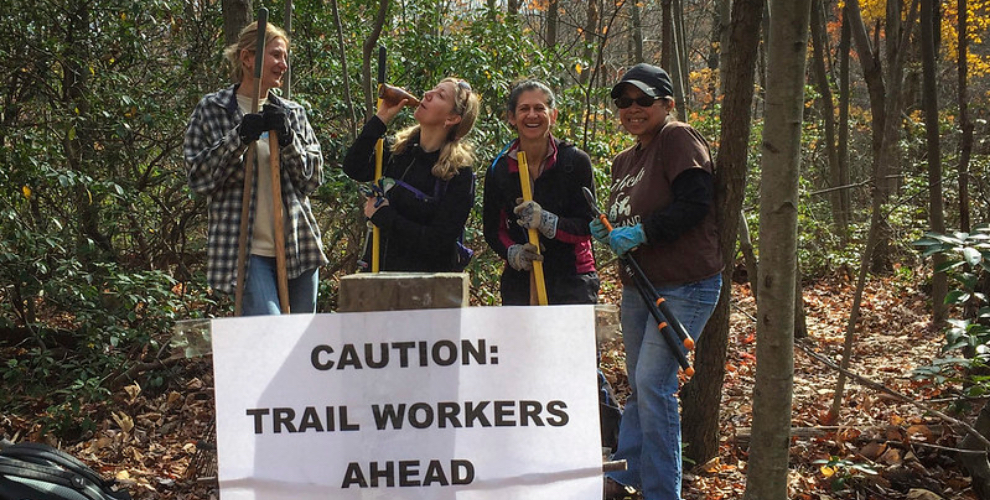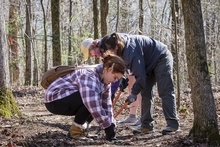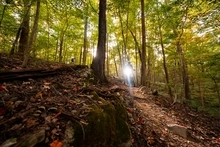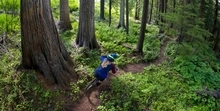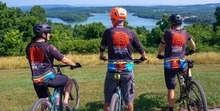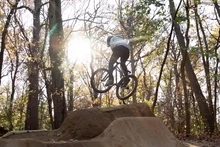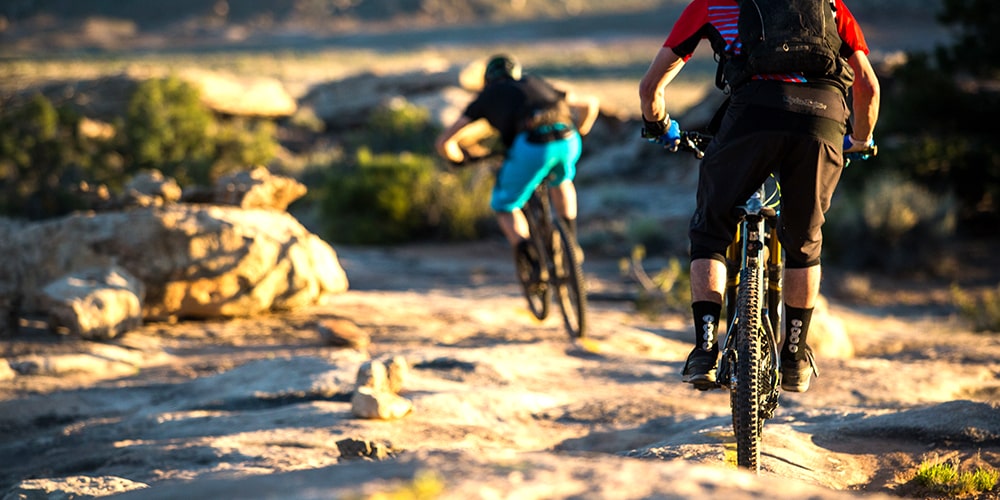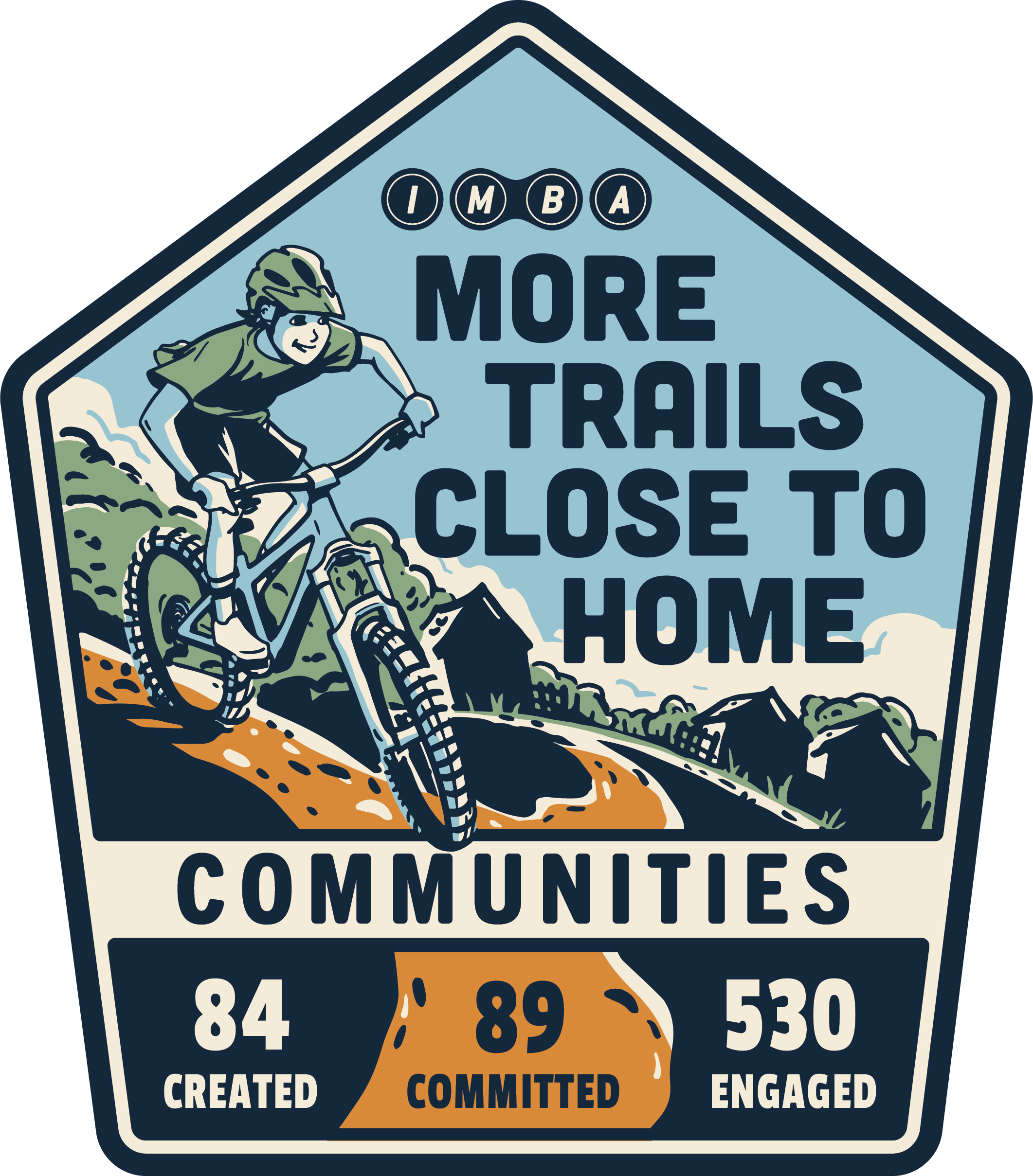Green Trails, Greenways, and an Ecosystem of Trails
There is no shortage of volunteer trail work days in Maryland, Virginia, and the District of Columbia. Choose a random weekend in the spring or fall, and Mid-Atlantic Off Road Enthusiasts (MORE) is likely to have trail work scheduled in one of the 62 parks with 829 miles of trail they maintain. There doesn’t seem to be a shortage of volunteers for this IMBA Chapter either. MORE members contribute an average of over 16,000 volunteer hours a year.
The Trail Liaison program, which has been around for almost as long as MORE has been in existence (they turn 30 this year), is how the organization gets many of its volunteers. Trail Liaisons are expected to develop a working relationship with land managers, help organize and lead trail work, and create a vision for trails incorporating input from the community.
IMBA chatted with some folks from MORE to learn more about this program.
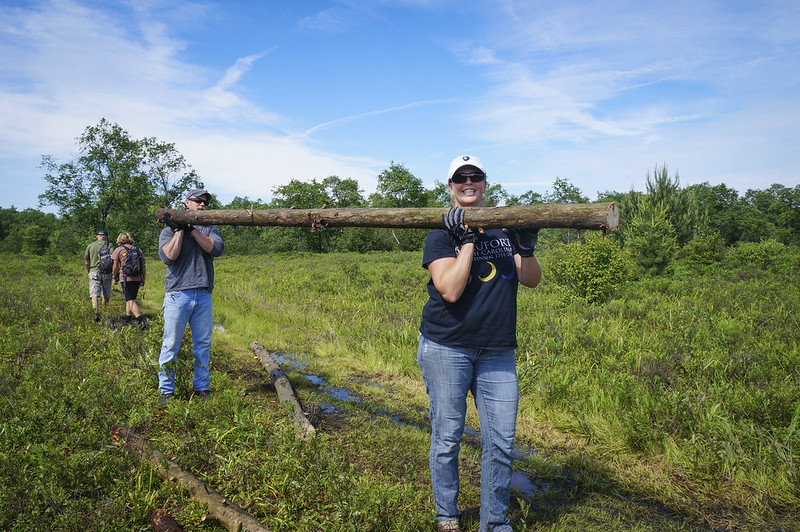
What is expected of Trail Liaisons?
Ernie Rodriguez, MORE President and IMBA Board Member:
They have to agree to be trained. They are responsible for sharing their vision and working with the land manager on that vision, and abide by the four unofficial rules of trail building:
- Never build without approval and support of the land manager
- Only build what the land and topography will naturally allow
- Only build what the community is capable of building and/or maintaining
- Always consider other trail users
- Only build what you have the financial resources to build and support.
Those are the basics. Beyond that, we encourage Liaisons to do what excites them.
MORE encourages its Trail Liaisons to do what excites them. What are some things that excite you and how have you added your own flavor to trail liaising?
Mike Klasmeier, Trail Liaison for Bacon Ridge:
I always enjoyed bike park riding, and most singletrack in our region was awkward with reduced-radius turns and generally lacking flow. We design trail with constant radius turns so people can learn to go fast, we can reduce braking but still make sure that everyone from beginners to experts can have a great time. We also include natural features, rollers and jumpable-stuff in our builds. We just finished up our first machine-built flow trail a month ago to give people a more diverse mountain bike experience besides good old singletrack, which we have 35 miles of. I'm a big fan of bringing trails to places that didn't have them before.
Carlo Alfano, Trail Liaison for Rivers Edge:
I had to trust the machine builders to come in and do what they think is best for the trail system. We have people driving in from an hour, an hour and half, even max two hours away to use these trails because there isn’t a trail system like that in the area. You pair that with stickers, patches to be put on knit hats, just fun things that people can do to show their support. And tying that into helping to pay for some of the tools or gas or feeding volunteers whenever they come out. Whenever we do one of these, those things just fly off the shelves, so to me that made sense. It’s a small trail system but this is one of the ways we can make the trail system seem bigger, is by having these hats, t-shirts, patches, stickers.
What are some ways you cultivate or maintain relationships with land managers?
Ernie:
I tell Trail Liaisons, you either have a great relationship or a great opportunity. When starting out with land managers, approach them, thank them for their work. Let them know you appreciate what they’re doing and let them know you’re going to give them free IMBA books. And then offer to walk the trails, offer to take them to other places, and then that becomes an education piece while not getting in their face and saying ‘you’re doing it all wrong.’
Land managers are unique and their organizations are not created equal. Find connection points and knowing their goals helps connect more effectively. We, as advocates and stewards, need to realize that when we talk to them, what we’re not saying but we’re actually doing is creating work for them. Because if we left them alone, they wouldn’t have any issues, they wouldn’t have any work. In their background, their mission/vision statement would still be there. You have to turn this into a connection to what’s valuable to them. And what’s valuable to them is to be able to check a box to say in my goals, I met this. Within my goals, I connected to the community.
Dave Magill, MORE Maryland Advocacy Director:
Often, the Liaison has been associated with the park longer than the park manager. At Schaeffer, I’ve been through five park managers, and if I don’t get the right answer from this one, I’ll wait a few years and come back. We do what the land managers allow, but sometimes it just takes a while. If you keep asking, you’ll get where you want to be. The key is to push that down to this personal relationship with someone who probably lives within a few miles of the park so that they can really have that relationship, and then we encourage them to offer work, offer education. We do a lot of trail signage about muddy trails and trail etiquette so that we’re educating and so that land managers see the value in what we’re doing, and that’s what makes them more amenable to our asks for trail access.
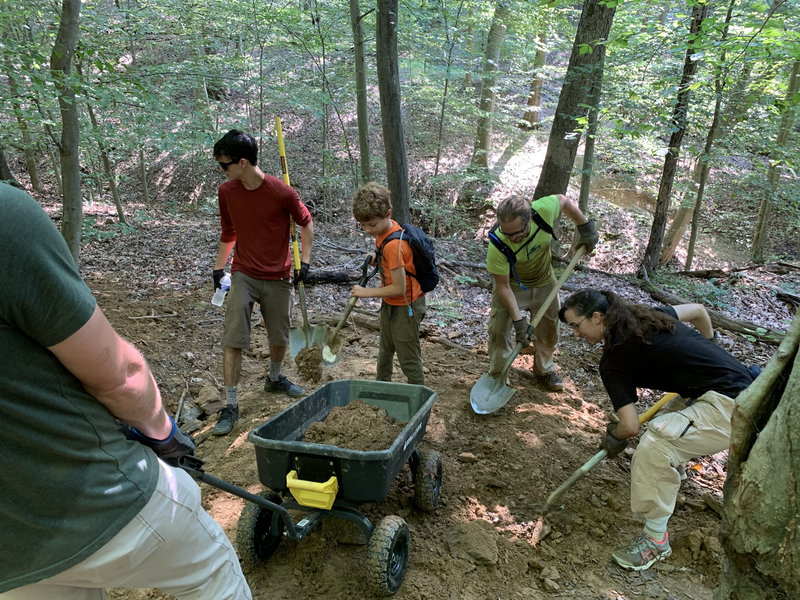
Have you faced any issues with mountain bikers or other trail users who don't understand the work you do? How have you dealt with that?
Carlo:
Part of the headache we’ve had as liaisons is trail users who don't understand what it takes for these trails to be built and who’s actually out there building it. It’s not like you snap your fingers and these trails magically appear.
We work on that education piece. We do a lot of signage. The first year of the pandemic, one of the issues we had in the wintertime was people were coming out and riding trails during freeze thaw conditions and the trails were getting absolutely trashed. Fortunately for me, working with the city of Brunswick, I got permission from the city to close the trails. But I didn’t close the trails to runners, hikers, and bikers. I closed the trails to mountain bikers, and the reason that I did that was because when you looked at where the damage was, it was all from tires. It was not from hikers or runners. Not everyone agreed with that, that we should selectively close the trail to specific users, but I think because of where we are in Brunswick, we’re a lot farther out than other trails so we don’t get a lot of foot traffic. It’s a unique situation to us that we can close specifically to mountain bikers.
We have to tape off our features, we have to put orange netting. We announced on social media that we are closing the trails in February and March. I’m exploring options to put up something that’s more permanent so that we don’t have to have these trail days come springtime that we’re having to heavily go in and fix trails damaged by riders who are using them when they’re not supposed to. That’s been the biggest frustration for all of us, that education piece.
What makes an effective trail liaison? What advice can you give to individuals looking to go from just riding to someone more involved in the community?
Mike:
Trail design/construction training and civics lessons. If you don't understand who is in charge of the land, how to get in touch with them, how to influence them and the wide variety of environmental reviews (if any) at different levels of government, you won't be successful. You also need to be able to organize volunteers, raise money, speak in public, deal with emergencies, market and promote your project, and follow through. It's one of the hardest things I've ever done and I feel like I've had great success. I recommend everyone study the federal Clean Water Act as that is what is usually leveled against us by people who don't understand the rules.
Dave:
I think being a MORE Trail Liaison is the best volunteer job in the world! Take the time to get a vision of what the land can offer. Go to your land manager, invest some time to create a visual, a graphic. When you walk up to a park manager and say, I want access to trails or I’d like to build a trail here. It just doesn’t have the impact of even just having a map. Then you have to be able to talk about funding and support. Coming with a message that says, this would be very popular and it’s not going to be a burden to you. That’s the most important thing. These land managers have all sorts of things to manage, and they don’t even know what a good trail is like in many cases. Coming in and saying, if you give us access to the land, we’ll build it well, we’ll maintain, we’ll open it to everybody is a very powerful message. You don’t have to have everything lined up but have a message that you can make it happen and you can make it easy for them.
Carlo:
Networking and reaching out to other organizations or to other people who are doing it. In my case, it was reaching out to MORE. I think it also comes down to just letting land managers know that this is something that’s needed. Mountain biking has a huge economic impact to any town, and it’s even more impactful to small towns. There’s so many great examples out there for people to be able to use when creating something in their area.
--
For groups looking to start a similar trail liaison program, check out MORE's Trail Liaison Guide and
Trail Work Liability Waiver
